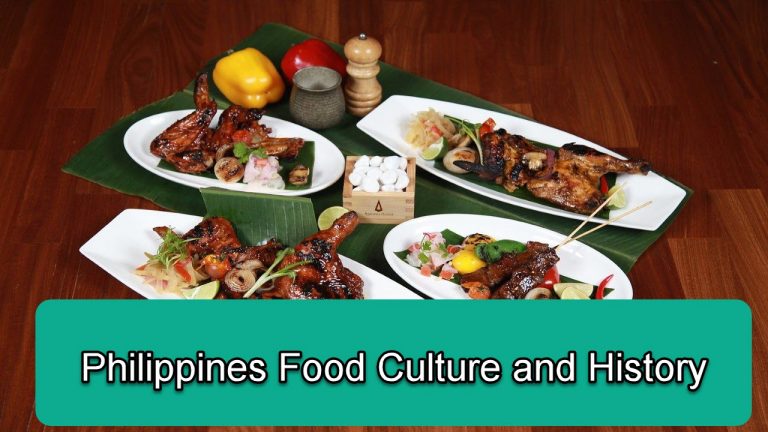15 Different Types Of Chefs With Images
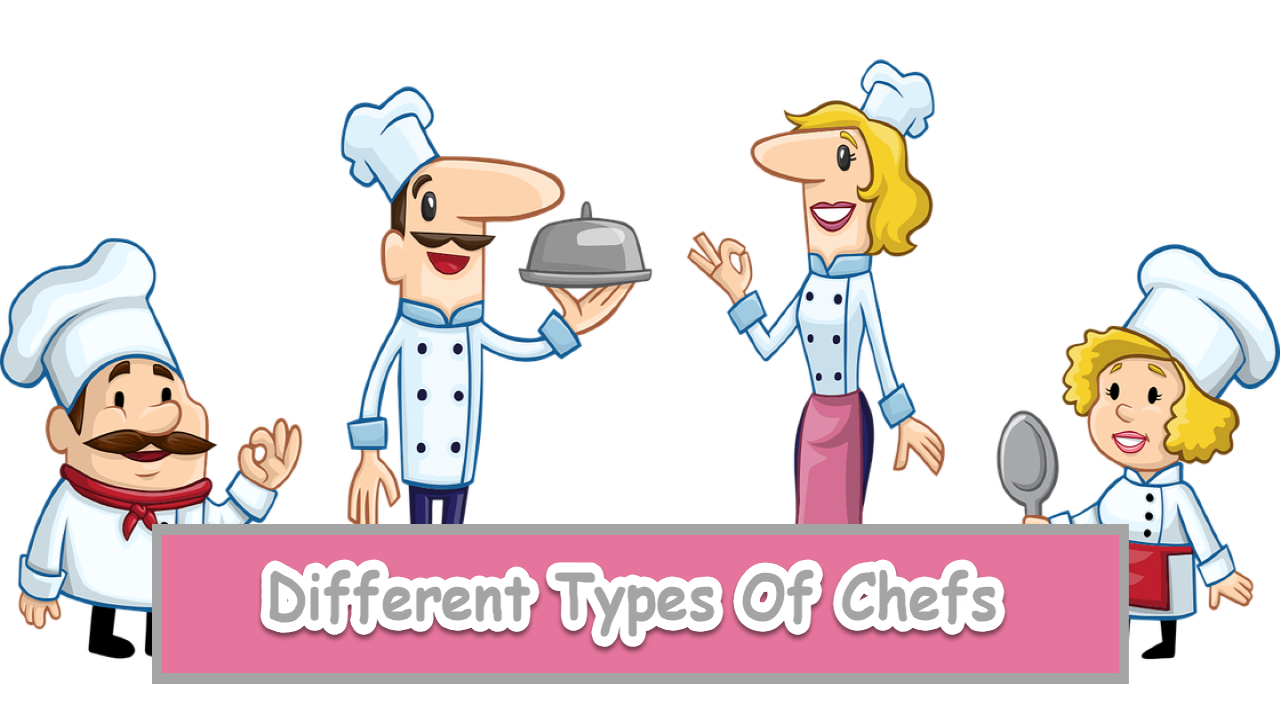
The most important person in the kitchen restaurant is the chef. The kitchen is certainly managed by the chef. He is in charge of developing menus, controlling kitchen costs, and managing the kitchen staff.
Selecting the ideal chef is one of the most important success factors in a popular restaurant. Actually, a single kitchen may employ a variety of chefs. Every dining establishment’s heart pumps in the kitchen. The team of specialist chefs that produce and prepare the delicacies is where all the art happens behind the scenes, and this is mostly because of them.
Continue reading to discover the different types of chefs and the jobs they carry out in a busy restaurant kitchen.
Types Of Chefs

What Is A Chef?
Let’s first define a chef before learning about the many types of chefs. A chef is a skilled professional cook and tradesman who specializes in a particular cuisine and is trained in all areas of food preparation. The term chef de cuisine, which refers to the manager or leader of a kitchen, is where the word “chef” originated. Chefs might acquire formal training at a facility/culinary school or by working under an experienced chef.
Check out the different types of chefs below.
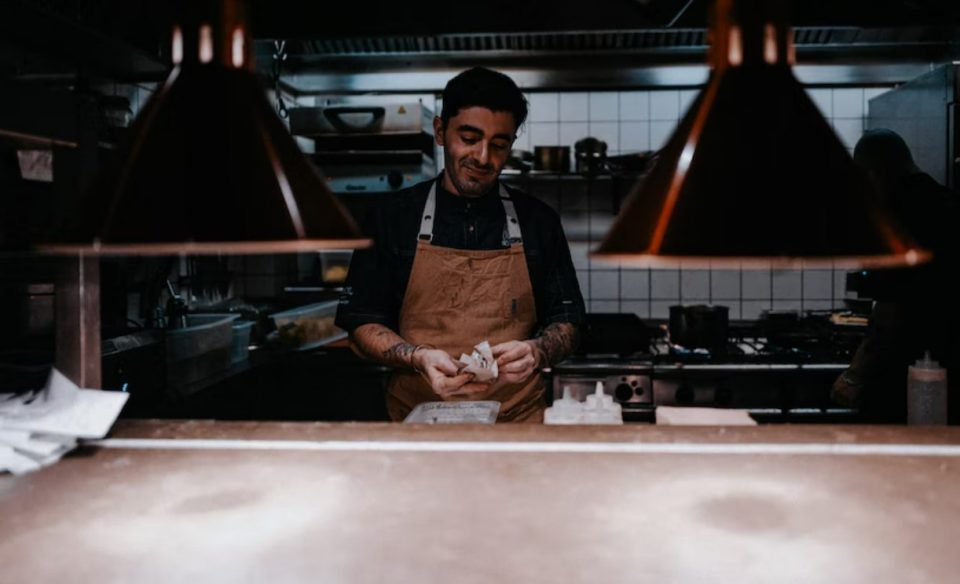
1. Chef de Cuisine/Head Chef/Executive Chef
Also known as the executive chef, chef manager, head chef, and master chef. He is responsible for overseeing all kitchen-related tasks, such as planning the menu, supervising the kitchen staff, ordering and purchasing inventory, regulating the price of raw materials, and plating design. The term “head chef” is frequently used to refer to a person who performs the same tasks as an executive chef, but a head chef typically reports to someone who may be in charge of making more significant executive choices, such as menu direction, final authority in staff management decisions, etc. For senior chefs who work at many restaurants, this is frequently the case. The head chef is actively involved in examining the sensory evaluation of dishes after preparation and are well-versed in all of the sensory characteristics of those particular foods.
So, basically, the head chef or executive chef manages the kitchen restaurant. There should only be one head chef per kitchen.
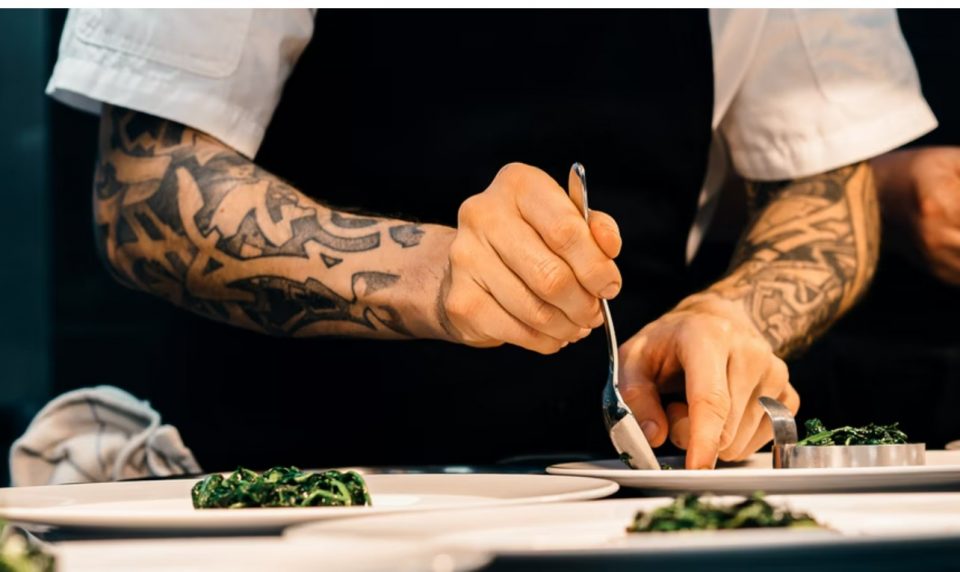
2. Pantry Chef/Garde Manger Chef
Salads, cold cuts, hors d’oeuvres, soups, cold appetizers, and dressings are among the cold dishes that the pantry chef is in charge of making.
Additionally, they will be in charge of setting up buffet lines and adding centerpieces for a sophisticated presentation that might include ice that has been carved and sculpted or fruits. A significant portion of the pantry chef’s duties involve presentation. So you can give credit to the pantry chef when you see elaborately carved veggies, ice sculptures, or home-made ceviche.
Typically, the pantry chef has few responsibilities in terms of management. Larger businesses, however, might have Garde manger staff.
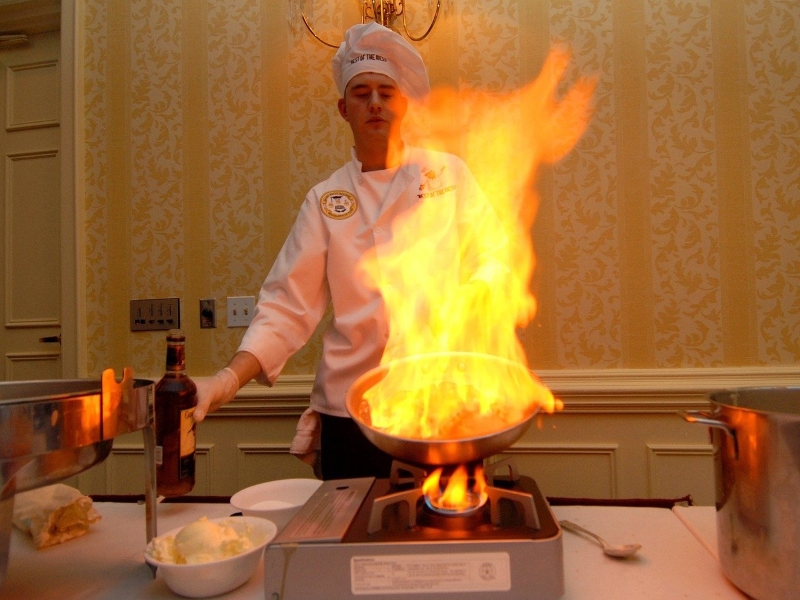
3. Sous Chef/Second Chef/Under Chef/ Assistant Chef
The chef de cuisine or head chef’s second-in-command and personal assistant is known as the sous-chef de cuisine. This person may be in charge of assigning the kitchen workers their schedules or filling in for the head chef when they are not available. Additionally, when necessary, he or she will step in for or help a chef de partie (line cook). The kitchen’s inventory, cleanliness, organization, and ongoing employee training are all under this person’s control. Along with carrying out the head chef’s instructions, line checks, and managing the timely rotation of all food items are additional responsibilities for a sous-chef. Smaller businesses could not have a sous-chef, but bigger businesses might have several.
Generally speaking, a sous chef’s duties are team management and carrying out the orders of executive chef. Depending on the size of the restaurant, there may be more than one in the kitchen. Normally, they train freshly hired cooks and chefs. The sous chef’s responsibilities also include hiring new line workers, and scheduling the kitchen personnel.
Sous chef is also in charge of quality control and making sure the cook line functions like a properly oiled engine.
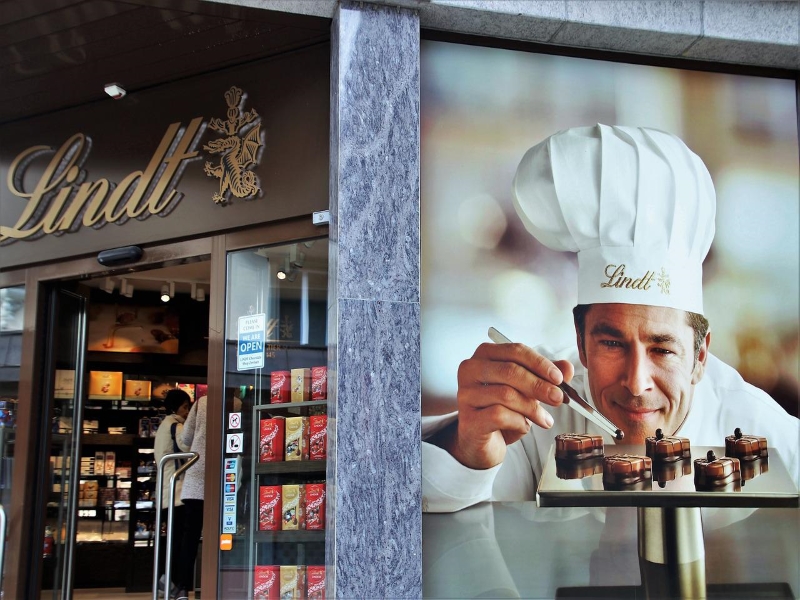
4. Pastry Chef
A station chef in a professional kitchen who specializes in the creation of pastries, sweets, breads, and other baked items is known as a pastry chef or pâtissier. Large hotels, bistros, restaurants, bakeries, and certain cafés all employ them.
They may also need to explore recipe ideas, create, and test new recipes as part of daily operations. Before dinner service starts, the pastry chef typically completes the necessary preparation for the numerous desserts. When sweets are ordered, a different station chef, normally the garde manger, will actually plate them. The dessert menu is sometimes in control of the pastry chef, who may also be in charge of dessert wines, specialized dessert beverages, and gourmet cheese platters in addition to typical desserts.
In general, pastry chefs are in charge of making desserts, breads, and pastries. The position typically needs completion of a degree in baking or significant specialized training. This position might be equivalent to executive chef, depending on the establishment.
Creating menu items, instructing staff members in proper presentation, and guaranteeing the quality of ingredients are some of the other responsibilities of pastry chefs.

5. Grill Chef/Grillardin
The main task of a grill chef is to cook grilled foods, such as steaks and chicken. Typically, they will grill meats and occasionally veggies.
The grill chefs will have few to no managerial tasks, similar to other line station employees. But, they’ll probably be working close with the butcher chef because they’ll need to be really familiar with meat cutting.

6. Vegetable Chef
Vegetable chefs specialize in vegetable dishes and starches. They prepare and cook them. They might also be in charge of certain soups and egg dishes.
The vegetable chefs work at the entremetier station in a kitchen.
They can be found with the other station chefs along the cook line. The only managerial or supervisory responsibilities they will have are possibly assisting the sous chef in onboarding new employees.
Usually, there is only one vegetable chef in small or medium sized establishments. A potager chef, who is in charge of soups, and a legumier chef, who solely handles vegetables, might be appointed by larger restaurants.

7. Roast Chef
Also known as Meat Chef or Rotisseur. The roast chef is another type of chef who prioritizes meats. The primary duty is to roast, braise, broil, or otherwise prepare and cook meats.
Meats that are roasted or braised must be prepared using specific techniques since they cook slowly in the oven.
Very few duties outside of the cook line will be the responsibility of the roast chef. They also sometimes assist in formulating menu items and coordinating with local suppliers in some restaurants.
They are also sometimes in charge of making the sauces that go with particular roasts.

8. Sauté Chef/Sauce Chef/Saucier
A position in the traditional kitchen brigade system is that of a saucier or sauté chef. The English equivalent is known as sauce chef. The saucier not only makes sauces but also stews, hot appetizers, and sautés food to request. Sauce chef is a part of the cook line.
The saucier is often remains tertiary to the chef and sous-chef, despite the fact that it is sometimes thought of as the highest position of the station cooks. Depending on whether there is a head and executive chef, they are either second to the sous chef or third or fourth in rank. A saucier holds a high-ranking post due to the complexity of many of the food items they are in charge of.
The majority of places that serve French cuisine have this position.
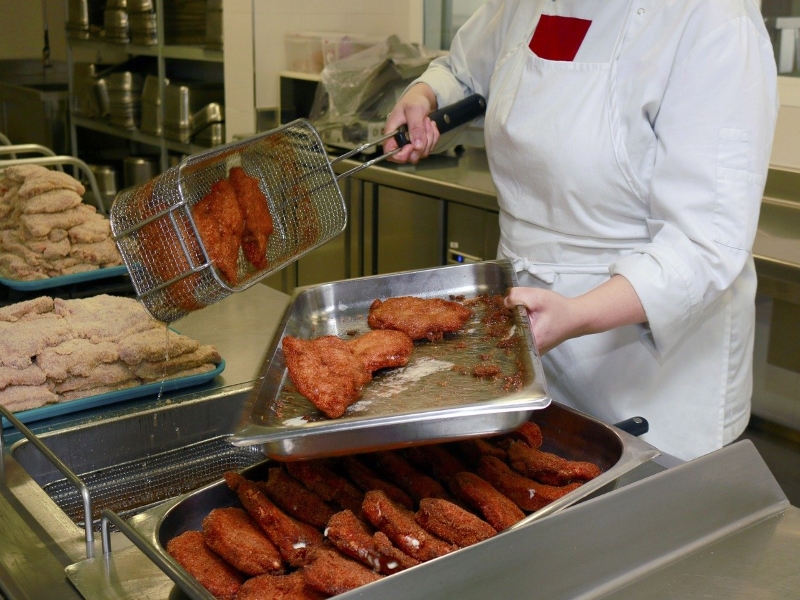
9. Fry Chef/Friturier
A fry chef’s main responsibility is to prepare food that has to be fried. Fast food restaurants are the main places that need fry chefs.
Basically, the line cook in charge of all fried foods is known as the fry chef. In particular, other chefs will handle items that need to be pan-fried while one chef manages the deep fryer.
The fry chefs may not play a significant role in fine-dining restaurants. , but they may be one of the busiest positions behind the line at restaurants that provide a lot of fried food or fast food chains.
Cook timings are one of the most important things a fry chef needs to know. The amount of time that fried dishes need to cook varies, and it’s frequently important to achieve the perfect level of crispiness and golden color.
Timing is crucial since these meals are typically served as a side dish. Additionally, the fry chef will make sure the frying oil is sanitized and of the proper temperature.
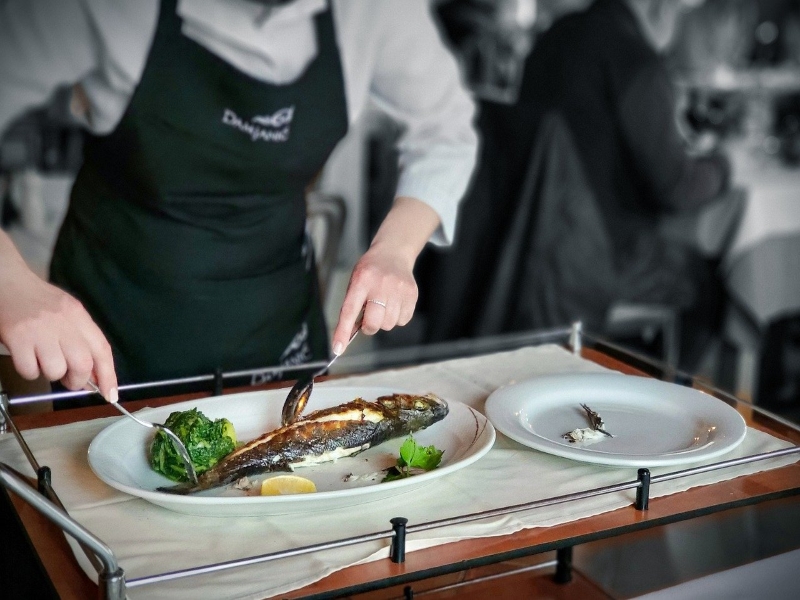
10. Fish Chef/ Poissonnier
The main task of a fish chef is to prepare and cook seafood. The seafood utilized in a restaurant may also be purchased by the fish chef from a local market or a non-local seller.
So basically, all fish dishes on the menu, including entrees, soups, and appetizers, must be prepared by the fish chef.
The fish chef will only prepare fish dishes in larger establishments. However, you might see them making the fish accompaniments in smaller establishments. Soups, stocks, and sauces are included in this.
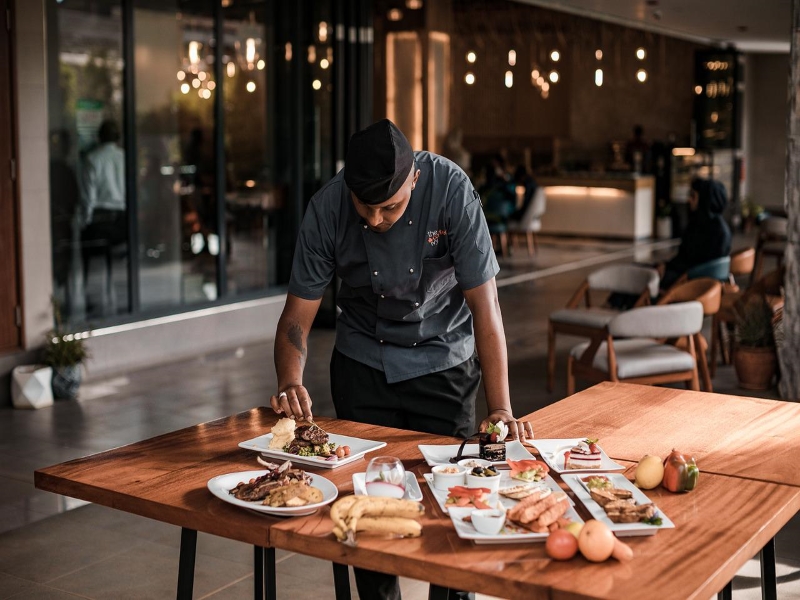
11. Senior Chef/Chef de Partie
Senior chefs’ primary responsibility is station management. In a kitchen, there may be more than one senior chef.
Senior chefs are also in charge of particular kitchen work areas. They usually specialize in a certain area of the menu and make sure that only top-notch food is served from their station.
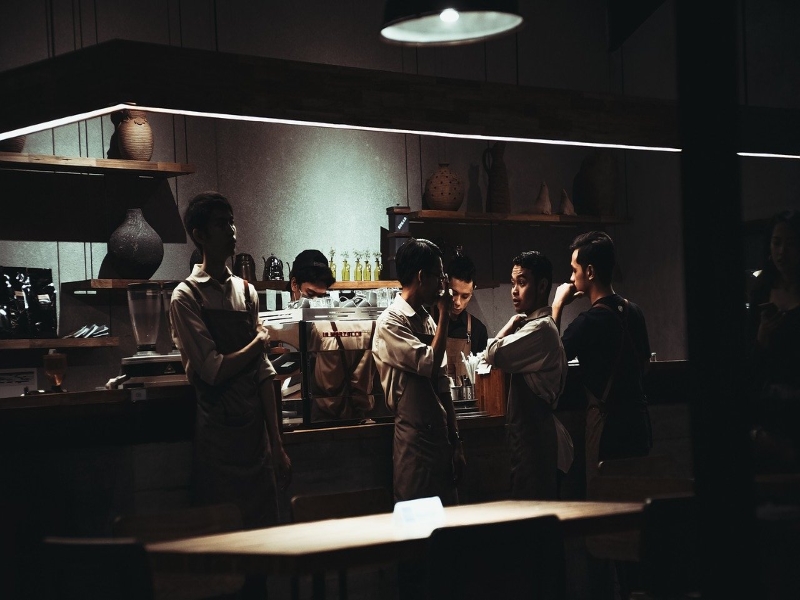
12. Commis Chef
When you think about regular line cooks, you might picture commis chefs. To develop their culinary abilities, these chefs are usually trainees or apprentice under station chefs. A commis chef’s duties also include rotating stock, helping the station chefs, and other smaller tasks.
In the commercial kitchen hierarchy, the commis chef is the lowest-ranking employee. A commis chef typically advances through the ranks to become a senior chef.
Any commis chef who aspires to one day work as a sous chef will probably make the rounds to get a deeper understanding of all the kitchen and cook line areas.
Other specialized chefs are listed below.
13. Butcher Chef
Meat cuts are prepared by the butcher chef to be used by other station chefs. He is essentially required in larger restaurants to meet demand.
Generally speaking, all culinary tasks involving raw meat are managed by the butcher chef. As the meat arrives to the restaurant, this often entails splitting, trimming, deboning, and carving complete portions of meat.
14. Roundsman
A roundsman’s main responsibility is to fill in when needed. Typically, they help chefs who could be overworked at their stations.
A step below the sous chef is the roundsman. They must be knowledgeable about every aspect of the kitchen and capable of making quick adjustments. Understanding each station’s ins and outs is a priceless talent and a must for kitchen leadership.
The roundsman must be ready to assume their position without hesitation when someone calls out.
A roundsman is in a great position to advance to the post of sous or head chef, just as a commis chef.
15. Expediter
The primary task of the expediter is to manage the kitchen’s workflow. The sous chef is frequently given this responsibility.
The bridge between the chefs and servers is the expediter. The expediter will tell the relevant chefs to begin cooking when a server sends back an order. The expediter makes sure the servers grab the appropriate stuff when they pick up the food.
The expediter is a very hard job that involves concentration, the capacity for prioritization, and, most significantly, the capacity for working under time limits.
Additionally, they must be familiarized with every dish on the menu, including its preparation time and any special needs.





